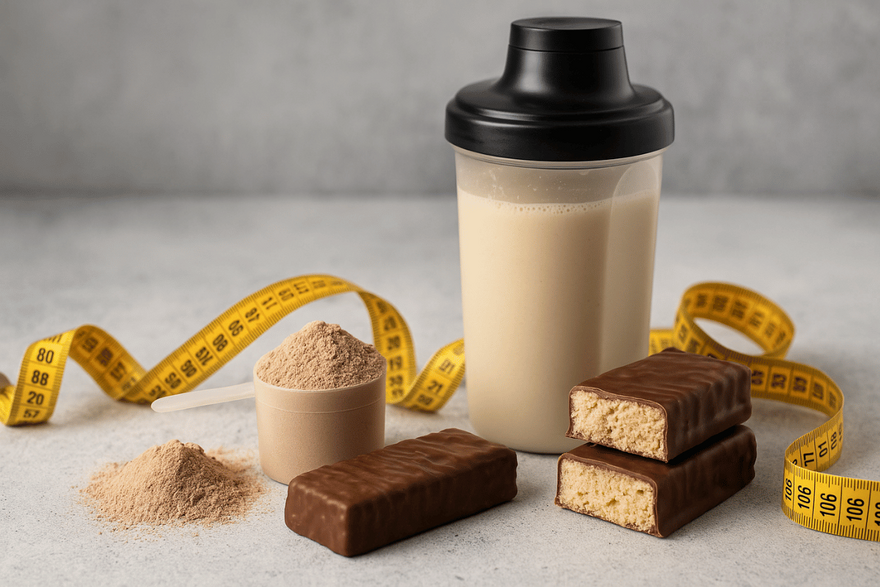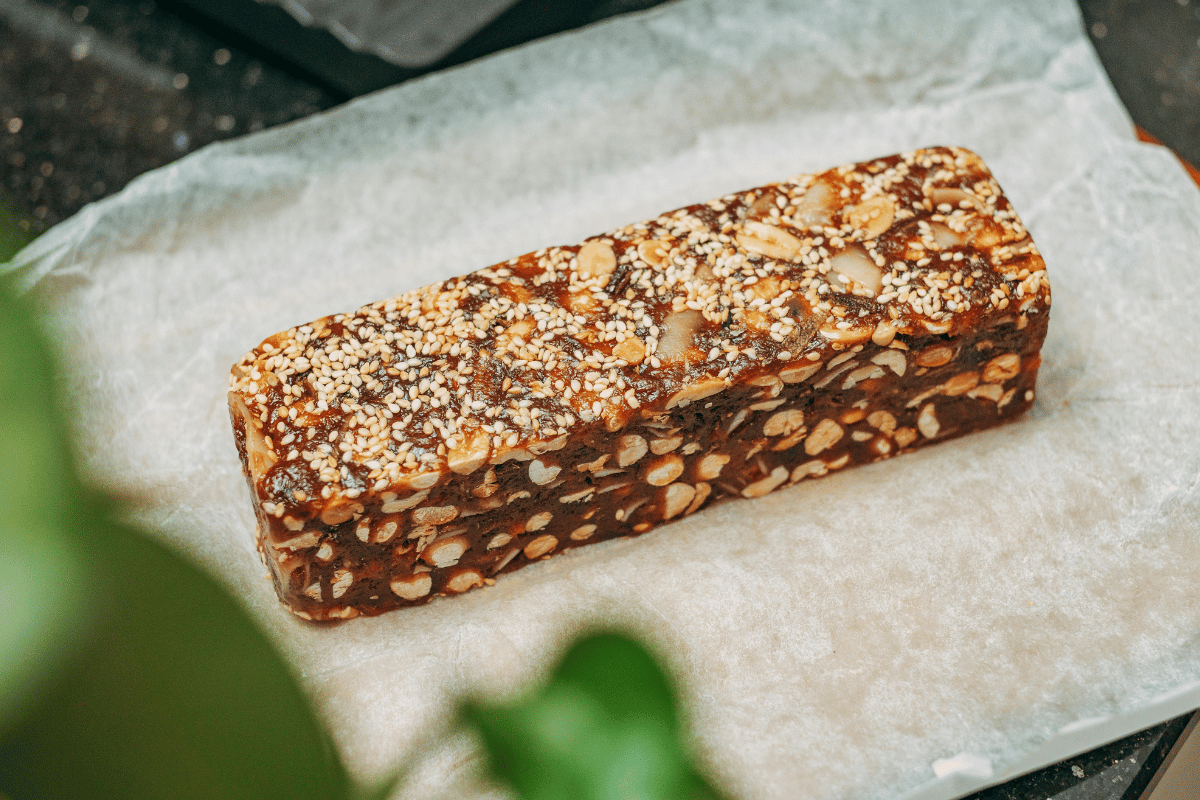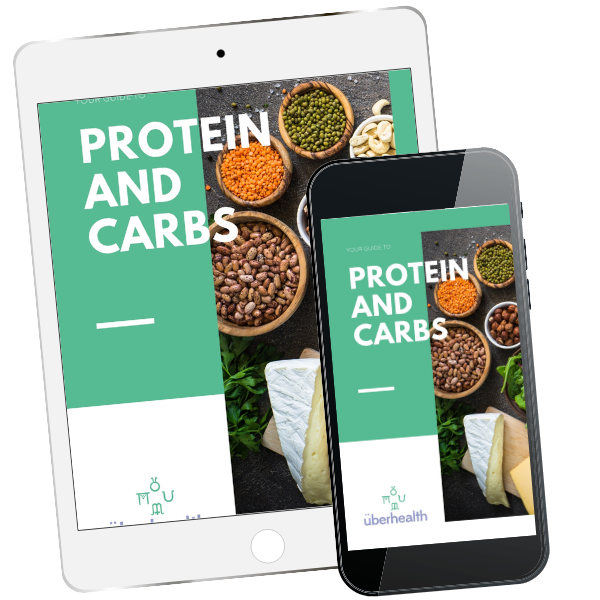How to Safely Use Protein Powders and Bars in Weight-Loss Programs

Protein powders and bars are everywhere - from supermarket shelves to gym bags and even naturopathic clinics. They promise quick nutrition, muscle support, and convenient meal options. But in the context of weight management, they’re often misunderstood.
Are they a healthy shortcut or an over-processed trap?
Can a supplement really support sustainable fat loss, or does it just replace real food with another packaged product?
The truth, as always, lies in the details and in physiology.
Used appropriately, protein supplements can be a powerful clinical tool to help clients preserve lean mass, stabilise appetite, and improve recovery. Used poorly, they can sabotage digestion, trigger cravings, and disconnect people from mindful eating.
Here’s how to navigate the evidence, choose quality products, and use protein powders and bars safely and effectively within a weight-loss program.
Why Protein Matters in Weight Loss
When people talk about “losing weight,” they usually mean losing fat, not muscle. Yet in almost every calorie-restricted diet, muscle loss occurs unless dietary protein and resistance training are prioritised.
Protein supports weight loss in several ways:
- Satiety: Protein is the most filling macronutrient, helping regulate hunger hormones like ghrelin and leptin.
- Thermic Effect: It takes more energy to digest and metabolise protein than carbs or fats — up to 20–30% of the calories in protein are used simply to process it.
- Muscle Preservation: Maintaining muscle mass keeps resting metabolism higher, preventing the “metabolic slowdown” that sabotages long-term results.
- Blood Sugar Control: Protein slows glucose absorption, reducing energy crashes and cravings.
For most adults, research supports 1.4–2.0 g of protein per kilogram of body weight per day, adjusted for training load, body composition goals, and metabolic health. That’s around 100–140 g per day for a 70-kg individual which is far more than the 45–60 g most people actually eat.
That’s where protein powders and bars can help: not as magic fixes, but as strategic support tools when real food alone doesn’t meet requirements.
Real Food First - Supplements Second
Before prescribing or recommending any supplement, always assess food patterns.
Can your client get sufficient protein from whole foods like eggs, fish, legumes, poultry, or tofu?
Are they skipping meals due to timing or appetite issues?
Protein supplements should fill a gap, not become the foundation.
Typical situations where supplements help include:
- Breakfast skippers who need quick nutrition on the run.
- Post-training recovery when appetite is low.
- Travelling clients who can’t access high-quality food.
- Older adults with reduced appetite or chewing difficulties.
- Vegetarian or vegan clients who struggle to meet their intake from plants alone.
In each case, supplements bridge the gap, but real, varied food remains essential for micronutrients, enzymes, and digestive resilience.
Understanding Protein Powders: Types and Sources
Not all powders are created equal. Each source has distinct amino-acid profiles, absorption rates, and allergen potential.
Whey Protein (Concentrate or Isolate)
- Derived from: Dairy (a by-product of cheese making).
- Pros: Complete protein, high in branched-chain amino acids (BCAAs) and leucine which is ideal for muscle recovery and satiety.
- Cons: Can cause bloating or mucus in those sensitive to dairy; not suitable for vegans or people with lactose intolerance (though isolates are lower in lactose).
- Best use: Post-training recovery, high-satiety meal replacement.
Casein Protein
- Derived from: Dairy.
- Pros: Slow-digesting; ideal before bed for sustained amino-acid release.
- Cons: Same allergen issues as whey; can feel heavy on digestion.
- Best use: Overnight muscle repair or for clients needing steady satiety.
Plant-Based Proteins
Includes pea, rice, hemp, pumpkin seed, soy, or blends.
- Pros: Suitable for vegans and those with dairy intolerance; many now have complete amino-acid profiles.
- Cons: Often lower in leucine; may need a combination (e.g. pea + rice) to balance amino acids.
- Best use: Daily smoothies or recovery shakes for plant-based eaters.
Collagen Powders
- Derived from: Animal connective tissue.
- Pros: Supports joint and skin health; easy on digestion.
- Cons: Not a complete protein as it lacks tryptophan, leucine, and key amino acids for muscle repair.
- Best use: Added to meals for gut or joint support, not as a main protein source.
What to Look for on the Label
Protein quality and purity vary widely. Some products marketed for “fat loss” or “performance” contain added sugars, gums, artificial flavours, or low-grade protein sources that do more harm than good.
When choosing or recommending, read labels carefully:
Protein content per serve: Aim for 20–30 g protein per scoop with minimal carbs (<5 g) and fats (<3 g) unless it’s a complete meal replacement.
Ingredients list: Look for short, clean lists.
Ideally:
- Protein source
- Natural flavour (vanilla, cacao, etc.)
- Minimal sweetener (stevia, monk fruit, or small amounts of sugar alcohols)
Avoid:
- Artificial sweeteners (aspartame, sucralose)
- Added vegetable oils or thickeners (carrageenan, polysorbate)
- High fructose corn syrup or “weight loss blends” with stimulants
- Excessive sodium (often in bars)
Allergen transparency: Ensure it’s clearly labelled gluten-free, dairy-free, or soy-free if required.
Third-party testing: For athletes, certification like Informed-Sport confirms the product is free from banned substances.

Protein Bars: Handy or Hype?
Protein bars can be lifesavers on busy days, or glorified candy bars in disguise. Many “healthy” bars have more sugar than a muesli bar and similar calories to a small meal.
When evaluating bars:
- Protein content: 15–25 g per bar is ideal.
- Sugar: <5–7 g total sugars per bar. Watch for hidden forms like brown rice syrup, agave, or dates in excess.
- Fats: Prefer bars using nuts, seeds, or coconut oil over palm or hydrogenated fats.
- Fibre: At least 3–5 g helps with satiety and gut health.
- Calories: Around 180–250 kcal suits most snack needs; higher may be appropriate post-training.
Bars are most useful as occasional tools, not daily replacements for real meals. Their texture encourages mindless eating — they disappear in three bites, offering less sensory satisfaction than chewing real food.
Encourage clients to eat slowly, drink water, and view bars as emergency nutrition, not everyday convenience.
Timing: When Protein Works Best
Protein timing affects how effectively it supports metabolism, recovery, and appetite control.
Morning: A high-protein breakfast (20–30 g) helps stabilise blood sugar and reduces snacking later in the day. Smoothies with protein powder are excellent for clients who skip breakfast or exercise early.
Post-Training: Within 30–60 minutes after resistance or endurance training, the body is most insulin-sensitive. A shake with protein (20–30 g) plus a small amount of carbohydrate (15–25 g) replenishes glycogen and starts repair.
Between Meals: A mid-afternoon protein shake or bar can prevent the 3-pm crash, stabilise energy, and reduce overeating at dinner.
Before Bed: Casein-rich or blended protein can support overnight recovery, particularly for athletes or clients doing evening training sessions.

Common Mistakes to Avoid
Even the best supplement strategy can go wrong when clients use protein powders mindlessly. Here are common pitfalls:
Mistake 1: Replacing Too Many Meals
Relying on shakes or bars for multiple meals creates nutrient gaps, weakens digestion, and often leads to rebound overeating.
👉 Fix: Limit to one supplement meal/snack per day, ideally around training or travel.
Mistake 2: Ignoring Hydration
High-protein intake increases the body’s need for water and electrolytes.
👉 Fix: Encourage clients to drink at least 30–35 mL water per kg body weight daily.
Mistake 3: Choosing Low-Quality Blends
Cheap powders often use inferior proteins, fillers, or hidden sugars.
👉 Fix: Recommend practitioner-grade or certified clean brands only.
Mistake 4: Overeating “Because It’s Healthy”
Bars can easily add 400–500 calories if eaten mindlessly.
👉 Fix: Treat protein snacks as fuel, not indulgence.
Mistake 5: Neglecting Micronutrients
High-protein diets need adequate magnesium, B-vitamins, and zinc for metabolism.
👉 Fix: Encourage whole foods, leafy greens, and mineral-rich hydration alongside protein supplements.
Supporting Digestion and Absorption
Some clients experience bloating, reflux, or fatigue from protein supplements often due to poor digestion, low stomach acid, or intolerance to specific ingredients.
Naturopathic tips for better tolerance:
- Choose hydrolysed or fermented proteins for easier absorption.
- Support digestive capacity with bitters, apple-cider vinegar, or enzymes if indicated.
- Start with half serves and build gradually.
- Rotate between protein sources to prevent sensitivity.
- Encourage mindful eating even with liquids, such as slow sipping not gulping.
Remember, digestibility equals usability. It’s not just what you consume; it’s what your cells can utilise.

Integrating Protein into Behavioural Change
For many people, adding protein shakes is a gateway to better food awareness. Once energy and appetite stabilise, they make clearer decisions at meals and snacks.
Practitioners can use this strategically:
- Replace one less-nutritious meal (e.g., pastry breakfast) with a protein smoothie.
- Use shakes post-exercise to anchor new training habits.
- Educate clients on reading labels and building meals around protein rather than carbs.
Over time, the supplement may fade out but the improved habits stay. That’s the ideal outcome.
From Quick Fix to Smart Strategy
Protein supplements have become part of modern nutrition culture, but they’re tools not solutions. When used consciously, they can support metabolic repair, recovery, and healthy weight management. When overused, they can distance people from the intuitive relationship with food that underpins long-term health.
The difference is education and context.
For practitioners: understanding the biochemistry of protein metabolism, nitrogen balance, and energy systems helps tailor advice precisely to each client’s physiology and lifestyle.
For individuals: recognising protein as a nutrient (not a trend) builds awareness, balance, and sustainability.
The Practitioner’s Role: Applying the Science
Integrating protein supplementation into weight-loss care means more than recommending a product. It means assessing:
- Digestive health and tolerance
- Daily energy expenditure and training type
- Hormonal status (especially perimenopause and andropause)
- Sleep, stress, and recovery patterns
- Behavioural triggers (emotional eating, reward cycles)
With this holistic lens, protein becomes a teaching tool and a way to reconnect clients with physiology rather than restrict them through fear of food.
Key Takeaways
- Protein powders and bars are supplements, not substitutes.
- Aim for 20–30 g protein per meal, adjusting to activity level.
- Choose clean, minimally processed products with few ingredients.
- Use them strategically: post-training, on the go, or for breakfast support.
- Monitor digestion, hydration, and overall nutrient balance.
- Educate clients that quality and context matter more than convenience.
Ready to Learn More?
If you’re a health practitioner or nutrition enthusiast who wants to dive deeper into the science and application of weight-loss physiology, join my upcoming training:
👉 Applied Weight Loss Nutrition
This 5-part professional course explores metabolism, hormones, fuel systems, and practical tools like protein timing, refeed days, and stress regulation — everything you need to help clients achieve healthy, sustainable results.
Because effective weight-loss support isn’t about fads or formulas. It’s about understanding how the body truly works and applying that knowledge with intelligence and care.
© 2025 Kira Sutherland | Naturopath & Sports Nutritionist
FREE RESOURCE


